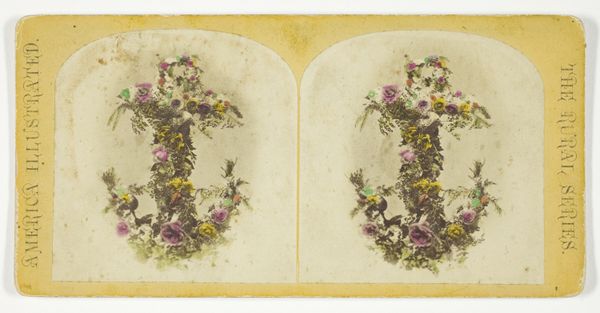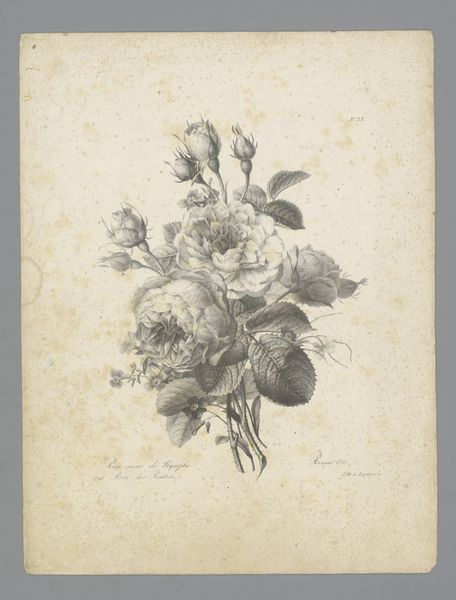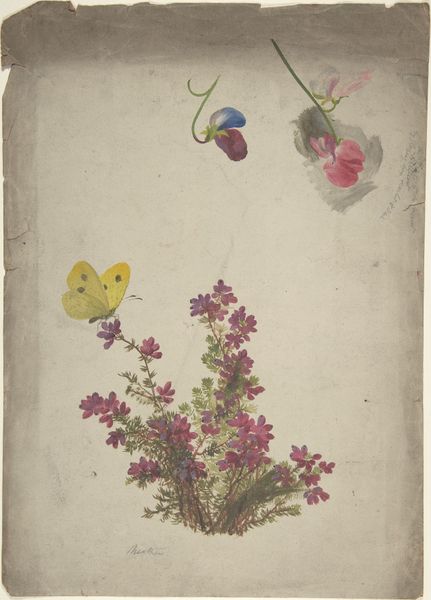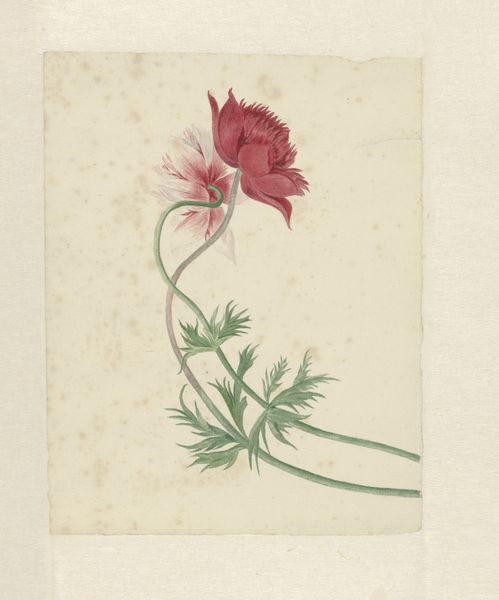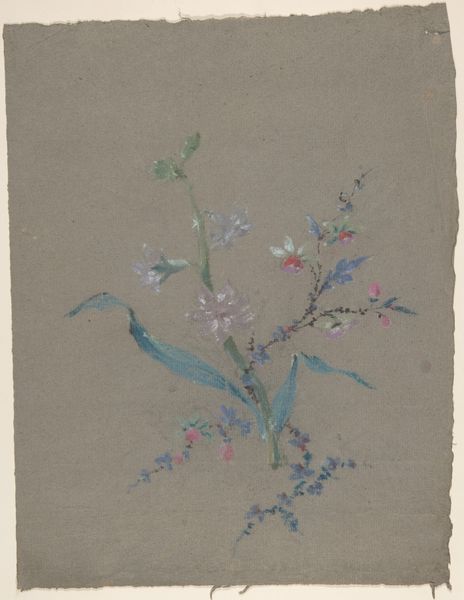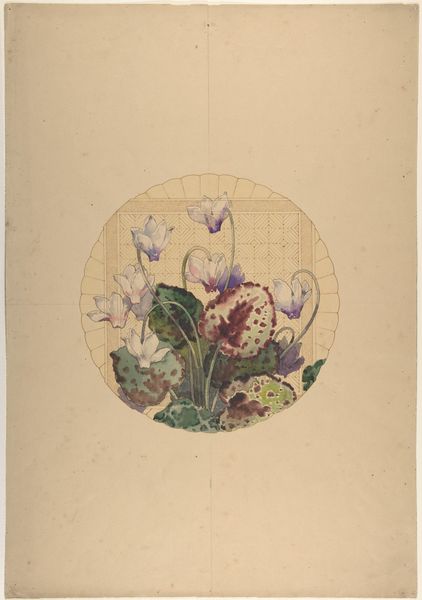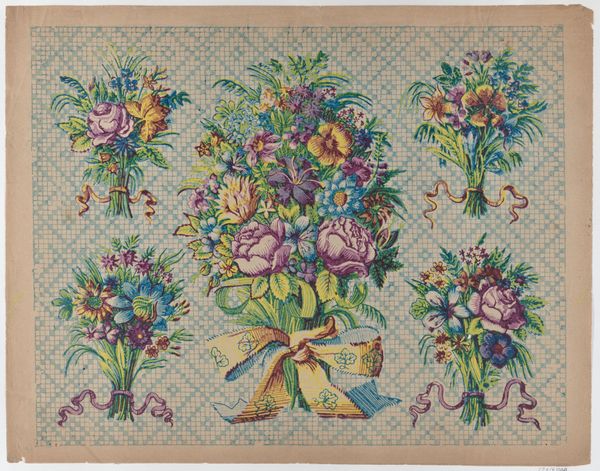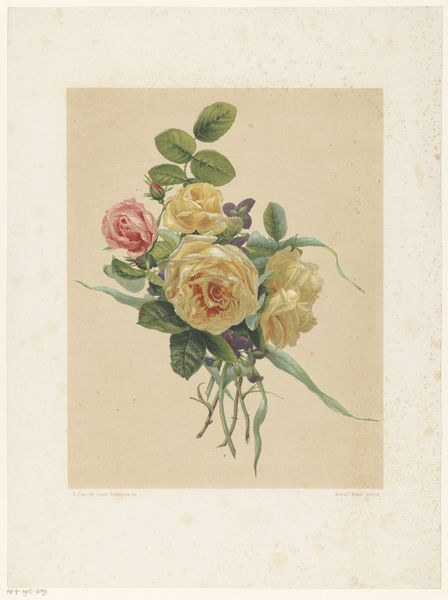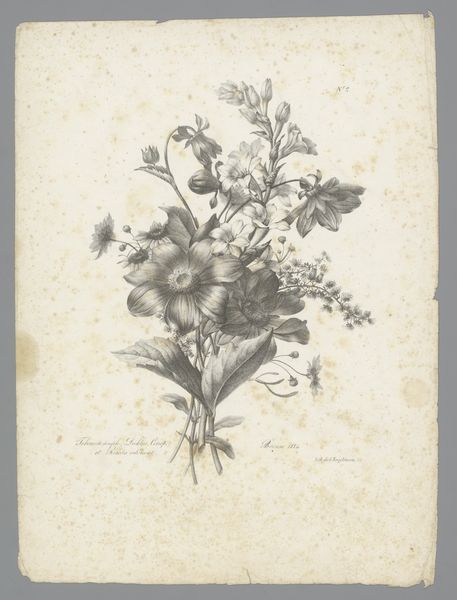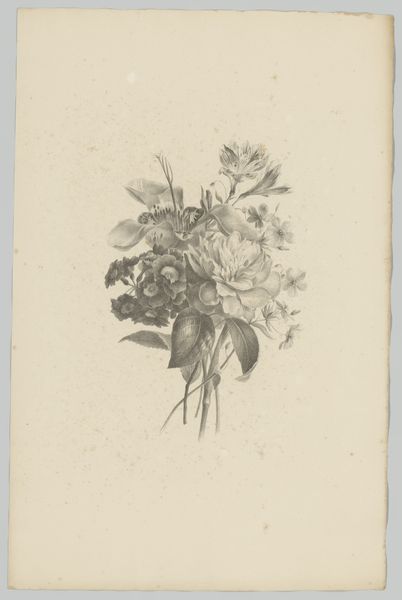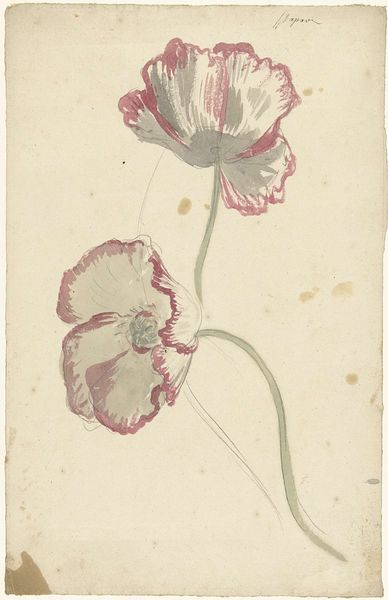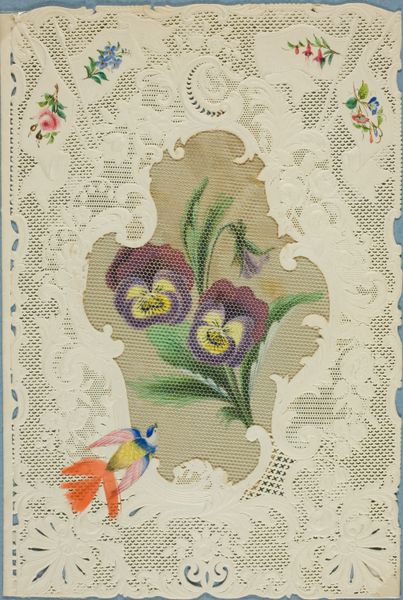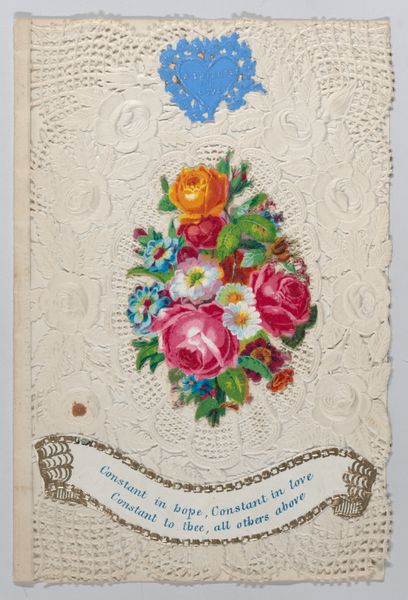
print, photography, watercolor
# print
#
photography
#
watercolor
#
coloured pencil
#
decorative art
#
watercolor
Dimensions: height 87 mm, width 177 mm
Copyright: Rijks Museum: Open Domain
Curator: I find this a curious artifact—a "Bloemstilleven met taxus, roos, anjer en fuchsia," which translates from Dutch to a flower still life featuring yew, rose, carnation, and fuchsia—created sometime between 1855 and 1870. It combines the techniques of printmaking, photography, and watercolor. What strikes you initially about it? Editor: There's a haunting quality, almost like a faded dream pressed between the pages of a forgotten book. The colours feel deliberately muted, save for that almost violently red rose—it's less vibrant bouquet, more a fragile, spectral memory. Curator: Spectral is a fitting word. Consider the production method; a photograph hand-painted with watercolors. The combination speaks volumes about the shifting relationship between industrial reproduction and the artisanal touch. The availability of photographic prints allowed for widespread distribution, while hand-colouring allowed each piece to be unique. What’s being commodified here? Not necessarily "high art" in the traditional sense. Editor: I suppose the very idea of ‘natural’ beauty? The photograph tries to capture it, while the watercolorist enhances, romanticises. But the result, especially now, is more melancholic. It makes me think about time, really. The brief, electric existence of each bloom now distilled into… this. A delicate memorial. Curator: Precisely. It blurs boundaries; what’s "real," what's copied, and what’s embellished. It’s neither strictly documentary photography nor wholly unique watercolour, but something intentionally situated in between. Note also the serial duplication inherent in the stereo card format. Editor: I’d almost missed that it's a stereo card, intended to be seen in 3D! It's adding another layer to that sense of reality versus artifice we were talking about earlier, making it feel more... present, perhaps. Although the faded effect reminds that that vividness is long gone. I do enjoy these layers of transience in one single object. Curator: The Victorians, a rapidly industrializing society, craved connection with nature. They began collecting such still lives en masse for study, sentimental or symbolic reasons. With photography on the rise as a process and as product, the cultural and social context behind each flower's selection becomes quite poignant. Editor: I'm left thinking about how much intention can still resonate, even from a blurry, almost anonymous little card. It makes you wonder what small comforts someone once found within this manufactured bloom. Curator: Exactly—and how that intimate engagement intersected with the technologies and market forces of its day. Thank you.
Comments
No comments
Be the first to comment and join the conversation on the ultimate creative platform.
